At its heart, a background check for employment is simply the process Australian employers use to confirm a candidate is who they say they are. It is a way to verify their identity, qualifications, and past history to make sure they are a suitable fit for the role. Think of it as a crucial risk management step that protects your business, your team, and your reputation.
Why Background Checks Are Essential for Australian Employers

A pre-employment background check is not about creating hurdles; it is about building a solid foundation for a safe and productive workplace. Just as you would check the structural integrity of a building before moving in, screening a candidate is a non-negotiable step to prevent future problems.
Having a structured screening process shows you are a diligent employer. It builds trust with new hires from the get-go and reassures your current team that you take their safety and the company’s stability seriously.
Protecting Your Business and People
Fundamentally, a background check is about safeguarding your organisation’s most valuable assets: its people, reputation, and resources. A thorough screening helps confirm that a candidate actually has the qualifications they claim and does not pose an obvious risk. This simple diligence can help you sidestep major issues, such as:
- Workplace Misconduct: You can identify red flags that might point to a history of harassment, theft, or other disruptive behaviours.
- Negligent Hiring Claims: It shows you took reasonable steps to create a safe environment for everyone, which is a key defence if something goes wrong.
- Reputational Damage: You can avoid the fallout of hiring someone whose past actions could tarnish your company's image.
A well-executed background check is more than a formality; it is a proactive strategy. It empowers you to build a team based on verified information, fostering a culture of trust and integrity from the moment a new employee joins.
Verifying Candidate Credentials
Let's be honest, a CV is a marketing document. It is designed to highlight the best parts of a candidate's history, and sometimes, those details get a little embellished. Research has consistently shown that a surprising number of people stretch the truth about their skills or work experience. Verifying a candidate's story is the only way to be sure they can actually do the job.
This is not just about catching lies; it is about confirming competence. When you hire for a technical role, you need to know the person has the foundational knowledge. When you need experience, verifying their employment history confirms they have been in the trenches and can handle the pressure. It is especially important today, when savvy candidates are doing their own homework—you can read more about why candidates do background checks on their future managers in our detailed article.
In Australia, these checks are a well-established and legally sensitive part of hiring. While they are not mandatory for every single job, they are considered a best practice for mitigating risk. Crucially, Australian privacy laws mean you must get a candidate's written consent before starting any screening, ensuring the whole process stays within legal and ethical lines. This structured approach helps you build a complete picture of a potential employee, ensuring they are the right fit while minimising workplace risks.
The Key Types of Pre-Employment Checks
Think of building a screening process like packing a toolkit. You would not use a hammer for every single job, would you? The same logic applies here. A one-size-fits-all approach to background checks just does not work. Instead, you need to select the right combination of checks that are genuinely relevant to the role for which you are hiring.
Picking and choosing wisely is the key to a fair, effective, and legally sound screening process in Australia. It is all about gathering the specific information you need to make a great hire, without overstepping. Let’s break down the most common tools in your background-checking toolkit.
National Police Checks
This is one of the most common checks in an employer’s arsenal. A National Police Check provides a summary of an individual's "disclosable court outcomes" from police records right across Australia. It is not a record of every single interaction they have had with law enforcement, but a formal list of things like convictions, pending charges, and findings of guilt.
This check is absolutely essential for any role where trust, safety, and integrity are non-negotiable. It is standard procedure for jobs involving financial responsibility, handling sensitive data, or having unsupervised contact with clients. The whole point is to see if there is anything in a person’s criminal history that would directly clash with the core duties of the job.
Working with Children Checks
When a role involves any kind of contact with people under 18, a Working with Children Check (WWCC) is more than just a good idea—it is usually a legal requirement. The exact name and process can differ slightly between states and territories, but the purpose is always the same: protecting children.
A WWCC is much more than a standard police check. It casts a wider net, looking at a broader range of records, including relevant workplace misconduct findings and even charges that did not lead to a conviction. It is also an ongoing assessment, meaning a person’s clearance can be cancelled if a new, relevant offence occurs.
It is vital to remember that a WWCC is role-specific. An individual with a clearance for volunteer sports coaching, for instance, may need a new check for a paid role in a childcare centre. Always verify the check is valid for the specific type of work you are offering.
Employment and Qualification Verification
It might sound basic, but you would be surprised how often you need to confirm that a candidate’s work history and qualifications are what they say they are. Study after study shows that a significant number of people stretch the truth on their CVs.
- Employment Verification: This simply confirms a candidate's previous job titles, their dates of employment, and sometimes why they left. It helps you build a factual picture of their career path.
- Qualification Verification: This involves getting in touch with universities, TAFEs, or professional bodies to make sure the degrees, diplomas, or certifications on a CV are legitimate.
These checks are not just about catching someone in a lie. They are about ensuring you are hiring a person with the proven skills and experience to do the job well, saving you from a costly mis-hire down the track.
Right to Work in Australia Checks
For any business in Australia, confirming a candidate's legal right to work here is a non-negotiable, mandatory step. If you hire someone who does not have the proper visa or work rights, your business could face some serious penalties.
The easiest way to do this is through the Visa Entitlement Verification Online (VEVO) system, a free service from the Department of Home Affairs. With your candidate’s permission and their passport details, you can instantly see their visa status and any work restrictions. This should be a standard part of your onboarding for every new hire who is not an Australian citizen.
To give you a clearer picture, here is a quick rundown of the most common checks you will encounter.
Common Australian Background Checks at a Glance
| Type of Check | Purpose | Commonly Used For |
|---|---|---|
| National Police Check | To identify disclosable criminal convictions and court outcomes. | Roles with financial duties, access to sensitive information, or high levels of trust. |
| Working with Children Check (WWCC) | To screen for offences relevant to the safety of children. | Any position in education, childcare, healthcare, or roles involving contact with minors. |
| Employment & Qualification Verification | To confirm past job history and educational credentials are accurate. | Virtually all professional roles to ensure candidate honesty and competence. |
| Right to Work (VEVO) Check | To verify a non-citizen's legal right to work in Australia. | All candidates who are not Australian citizens, as a mandatory hiring step. |
| Credit History Report | To assess financial responsibility and identify potential risks of fraud. | Highly restricted to roles in finance, banking, and positions with significant financial delegation. |
While these are the mainstays, more specialised screenings exist. For example, credit history reports are available, but their use is very tightly regulated. These are generally reserved for the financial services industry or senior executives with major financial authority, as you must prove a clear and direct link between a person's credit history and the demands of their job.
Navigating Your Legal and Privacy Obligations

Running a background check for employment is more than just another step in your hiring process. It is a serious undertaking that comes with a heavy weight of legal and privacy duties. For any Australian employer, getting this right is not just good practice—it is absolutely essential to conduct checks ethically, legally, and with genuine respect for your candidates.
The entire process hinges on one core principle: consent. Before you even think about starting a screen, you need explicit, written permission from the candidate. This is far from a box-ticking formality; it is a non-negotiable legal requirement under Australia's Privacy Act 1988. The consent form needs to be crystal clear about what checks you will be doing and why, so the candidate knows exactly what they are agreeing to.
Understanding Your Duties Under the Privacy Act
The Privacy Act 1988, along with the Australian Privacy Principles (APPs), is your rulebook for handling personal information. When you conduct a background check, you are dealing with incredibly sensitive data, and the rules are strict.
You can only collect information that is directly relevant to the specific, inherent requirements of the role. Think about it this way: a credit check might make sense for a Chief Financial Officer, but it is almost certainly out of bounds for a software developer. This simple test of relevance should be your north star.
On top of that, you are responsible for keeping this information secure. Whether it is stored on a server or in a filing cabinet, the data from a candidate's background check must be shielded from prying eyes, misuse, or accidental leaks. A breach here can lead to hefty penalties and can seriously damage your company’s reputation.
Interpreting Findings and Avoiding Discrimination
Getting a report back that mentions 'disclosable court outcomes' can feel a bit confronting. But it is crucial to approach this information with fairness and objectivity. A disclosable court outcome is simply a formal record of a conviction or a finding of guilt—it is not a reflection of someone’s character.
Your job is to weigh these findings solely against the demands of the position. A minor driving offence from years ago is unlikely to have any bearing on an office-based marketing role. A conviction for fraud, however, would be a major red flag for someone applying to join your finance team.
It is against the law to make a hiring decision based on prejudice or an unconscious bias. Australian anti-discrimination laws are clear: you cannot penalise a candidate for something like a criminal record unless it directly conflicts with the genuine requirements of the job. Your evaluation has to be consistent, evidence-based, and fair every single time.
To stay compliant and fair, you need to apply your screening policy consistently across the board. If you decide a police check is necessary for a certain role, you must perform that check for all final candidates for that position, not just one or two. Picking and choosing who you screen is a fast track to a discrimination claim.
Making Decisions and Withdrawing Job Offers
You can withdraw a conditional job offer based on a background check, but only if the information uncovered truly makes the candidate unsuitable for the inherent requirements of the job.
Before you make that final call, the best approach is to give the candidate a chance to discuss the findings with you. There might be important context or mitigating factors that the black-and-white report does not capture. Opening up this dialogue shows fairness and helps you avoid making a rash decision based on incomplete information.
Here is how to make sure your process is legally sound:
- Establish a Clear Policy: Figure out which checks are needed for which roles, based on risk and responsibility. Document it.
- Obtain Informed Consent: Get a signed form that clearly explains what you are checking and why. Make sure your candidates understand it.
- Assess Relevancy: Only consider information that directly impacts a candidate's ability to do the core parts of their job.
- Apply Consistently: Use the same screening criteria for all candidates applying for the same role. No exceptions.
- Communicate Transparently: If you do have to withdraw an offer, explain your decision clearly and professionally, tying it directly back to the job's specific requirements.
By building these principles into your hiring framework, you not only protect your organisation but also treat every candidate with the respect they deserve, building a foundation of trust from day one.
How Screening Requirements Vary Across Industries

When it comes to a background check for employment, a one-size-fits-all approach just does not cut it. In fact, it can land you in hot water with compliance. Think about it: you would not ask a software developer the same interview questions as a registered nurse, so why would you use the exact same screening process?
Different industries face completely different risks and responsibilities. This means their screening needs are also fundamentally different. It is all about proportionality—making sure the depth of the check matches the level of trust and responsibility the job demands. Getting this right ensures your process is both relevant and legally sound.
Protecting Vulnerable People in Healthcare and Education
In sectors like healthcare, aged care, and education, the number one priority is protecting vulnerable people. The stakes are incredibly high, which is why comprehensive background checks are a non-negotiable part of hiring. These industries have some of the most stringent screening rules in Australia for a very good reason.
Here, the checks go far beyond a simple police check. The focus is on specific, legally mandated screenings:
- Working with Children Checks (WWCC): This is mandatory for almost any role that involves contact with minors. It is not a one-off check; it is an ongoing assessment.
- National Disability Insurance Scheme (NDIS) Worker Screening: Anyone working with NDIS participants must pass this specialised check, which is designed to ensure participant safety.
- Professional Credential Verification: It is crucial to confirm that a nurse is registered with AHPRA or that a teacher holds the correct accreditation. This verifies they are qualified and legally allowed to do their job.
These checks act as a critical safety net, ensuring only suitable and trustworthy individuals are placed in positions where they care for others.
Mitigating Financial Risk in Banking and Finance
Move over to the finance sector, and the core risk shifts from personal safety to financial integrity. The main goal here is to prevent fraud, theft, and the misuse of sensitive financial data. So, naturally, the screening process is designed to vet a candidate’s honesty and financial responsibility.
A credit history check is a common tool in this industry, although its use is very strictly regulated. It is not about judging someone's personal spending habits. Instead, it is about identifying red flags—like a history of serious debt defaults—that could signal a higher risk of fraudulent behaviour, especially for someone managing client investment portfolios.
In finance, you are building a team based on demonstrable integrity. The background check process is all about verifying a candidate's history of responsible financial conduct, which is a direct reflection of the duties they will be performing.
Ensuring National Security in Government Roles
Working for the government, particularly at the federal level, often means handling classified information that is vital to national security. As you can imagine, the background checks are exceptionally thorough and can take quite a while to complete. This is a world away from standard employment screening.
The process is called security vetting, and it is an in-depth assessment of a person's suitability to hold a security clearance. Vetting can involve deep-dive interviews with the candidate and their referees, a detailed analysis of their financial history, and a complete review of their background to ensure they are trustworthy and not vulnerable to outside influence. Navigating this complex world can be tricky, which is why many turn to specialists. You can learn more about the role of recruitment agencies for government jobs to better understand the process.
A Practical Guide to Conducting Background Checks
Running a background check for employment is not just a box to tick; it is a careful, multi-stage process. Think of it less like a single task and more like a project plan, where every step needs attention to detail, legal awareness, and clear communication. When you get it right, you protect your organisation and treat every candidate with the fairness they deserve.
This guide will walk you through the entire journey, from getting started to making that final call. The real secret is simple: follow a consistent, logical process every single time.
Step 1: Securing Informed Candidate Consent
Everything starts with informed consent. Before you even think about running a check, you must give the candidate a clear, written notice and get their signed authorisation. This is not just good manners—it is a non-negotiable legal requirement under Australian privacy law.
Your consent form needs to be straightforward and easy to digest. It absolutely must spell out:
- What specific checks you plan to run (e.g., National Police Check, qualification verification).
- Why these checks are genuinely necessary for the specific duties of the role.
- Who will be doing the checks (your company or a third-party service).
- How their personal information will be handled, used, and stored securely.
Without this signed form in hand, moving forward is a serious privacy breach. A transparent consent process not only keeps you compliant but also builds trust and sets a professional tone right from the start.
Step 2: Initiating the Checks
Once consent is sorted, it is time to gather the necessary documents and kick off the checks. This is the hands-on part of the process. For most businesses, the smartest and safest route is to partner with an accredited background checking service. These specialists know how to navigate the system and keep everything compliant, saving you a world of headaches.
Of course, some checks can be done directly. For example, the government's VEVO portal lets you verify a candidate's right to work in Australia almost instantly. Whatever path you choose, it involves collecting ID, submitting the requests, and waiting for the results, which can take anywhere from a few days to a couple of weeks. To make sure your process is solid, it is worth reading a comprehensive guide on how to conduct background checks compliantly.
This image helps visualise the core steps.
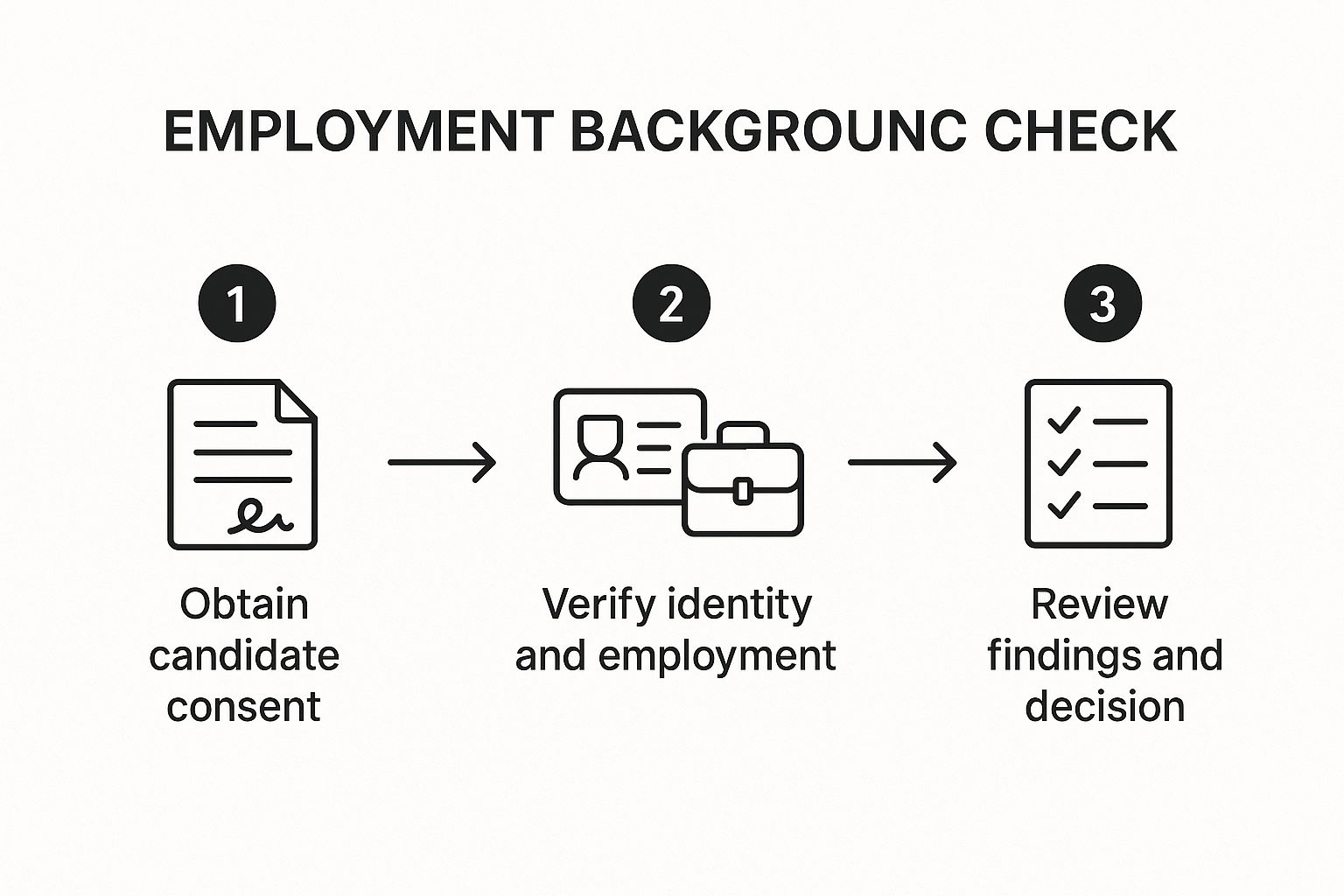
As you can see, it is a simple flow: get consent, verify the information, and then make a fair assessment before any final decision is made.
Step 3: Reviewing and Assessing the Findings
When the reports land on your desk, you have reached the most critical stage. This is where careful judgement and objectivity are paramount. Any negative information must be weighed strictly in the context of the job itself.
The real question is not, "Is this person's record flawless?" It is, "Does anything here directly impact their ability to perform the core duties of this role safely and effectively?"
For instance, a past driving offence might be irrelevant for an accountant but a deal-breaker for a delivery driver. Your assessment has to be fair, consistent across all candidates, and well-documented. This is the same methodical thinking you need for reference checks. If you are looking to brush up on that, have a look at our guide on the 4 easy steps for a reference check.
Step 4: Communicating the Outcome
The last step is to let the candidate know your decision. If the checks are all clear and you are ready to hire, that is an easy, positive conversation.
But if you have found something that makes you second-guess the offer, you need to handle it with care and transparency. The best approach is to give the candidate a chance to discuss what you have found. There could be an error in the report or a piece of context you are missing.
If you do decide to withdraw the offer, explain your reasoning clearly and tie it directly back to the essential requirements of the job. This ethical, upfront approach does not just keep you on the right side of the law—it protects your reputation as an employer who treats everyone with respect, no matter the outcome.
Common Questions About Employment Background Checks
Diving into the world of employment screening can feel a bit like navigating a maze. As an employer, you need to feel certain that your process for a background check for employment is not only effective but also fair and legally sound. Let's clear up some of the most common questions we hear from Australian businesses.
Getting your head around these details is the first step to making informed hiring decisions with confidence. From how long it all takes to the nitty-gritty of police checks, understanding the fundamentals makes for a much smoother, more ethical hiring process for everyone involved.
How Long Does a Background Check for Employment Take in Australia?
Honestly, it depends entirely on what you are checking. A straightforward National Police Check can often be turned around in just one to three business days. That said, some checks get flagged for a manual review by the police, which can add unexpected delays.
On the other hand, things like verifying someone's past employment or university degree are reliant on how quickly their old boss or university gets back to you. This can easily take several days. VEVO checks to confirm the right to work in Australia are usually instant. So, for a comprehensive screen that bundles a few different checks together, it is smart to plan for anywhere between three days and two weeks.
A good rule of thumb is to let your candidates know the expected timeline upfront. Being transparent manages their expectations and keeps the experience positive, even if things take a little longer than planned.
What Information Does a National Police Check Reveal?
A National Police Check provides a formal record of an individual's 'Disclosable Court Outcomes' (DCOs) from Australian police and court systems.
So, what does that actually include?
- Court convictions and any sentences handed down.
- Findings of guilt, even when a conviction was not officially recorded.
- Things like good behaviour bonds and other court orders.
- Any court charges that are still pending.
It is just as important to know what is not on there. The report will not typically show charges that were withdrawn or any 'not guilty' verdicts. Plus, some older convictions can become 'spent' after a certain period of good behaviour and will not be disclosed. There are exceptions, of course, especially for jobs involving children or national security. For a complete deep-dive, there is an article covering everything you need to know about background checks that is well worth a read.
Can I Withdraw a Job Offer After a Background Check?
Yes, you can, but there is a big "if". You can withdraw a conditional job offer if the check reveals something that makes the candidate unsuitable for the inherent requirements of the role. A perfect example is finding a recent fraud conviction for someone you have offered an accounting job to. That is a legitimate reason to pull the offer.
The key is that your decision must be directly and logically tied to the job's duties. It cannot be discriminatory. You cannot just change your mind based on information that has zero impact on their ability to do the job safely and well. Best practice is always to have a chat with the candidate about what came up. Give them a chance to provide some context before you make a final call.
Do I Need to Conduct Checks on Every Employee?
While background checks are only legally required for certain industries (like aged care or working with children), the golden rule here is consistency. Your internal policy needs to be applied the same way for everyone in the same type of role.
If you decide that a particular position needs a background check, you must perform that check for all successful candidates who are offered that role. Picking and choosing who to screen for the same job is a fast track to a discrimination claim. A solid internal policy will clearly outline which checks are needed for which roles, all based on a sensible assessment of risk and responsibility.
At Redwolf Rosch, we know that finding the right person is about so much more than what is on a CV; it is about building a team you can trust. If you are looking for a recruitment partner to help you navigate the complexities of hiring in the IT and digital space, get in touch for an introductory chat today. Find out more at https://redwolfrosch.com.au.
 Submit CV
Submit CV Submit vacancy
Submit vacancy  Call for a Candidate
Call for a Candidate
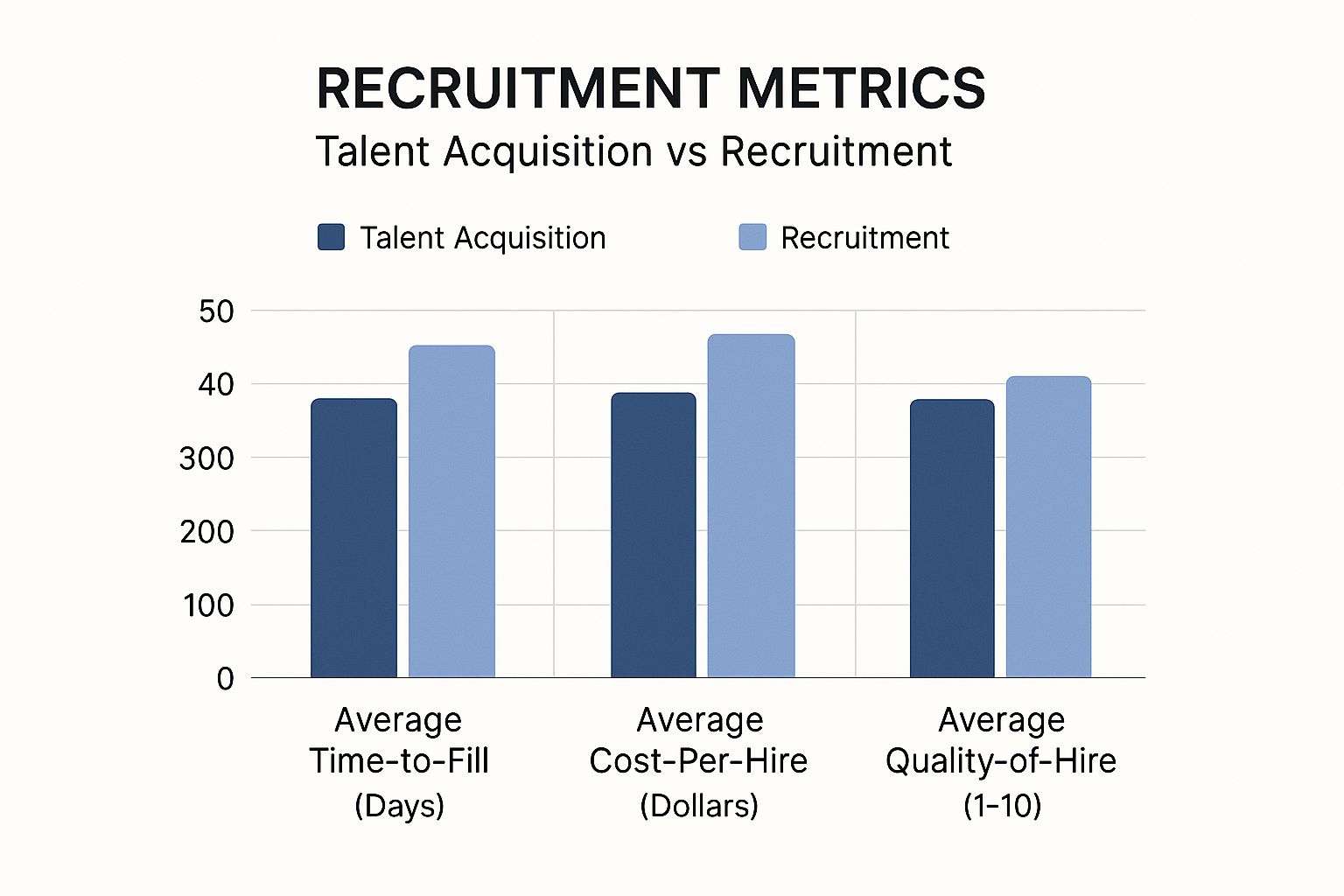
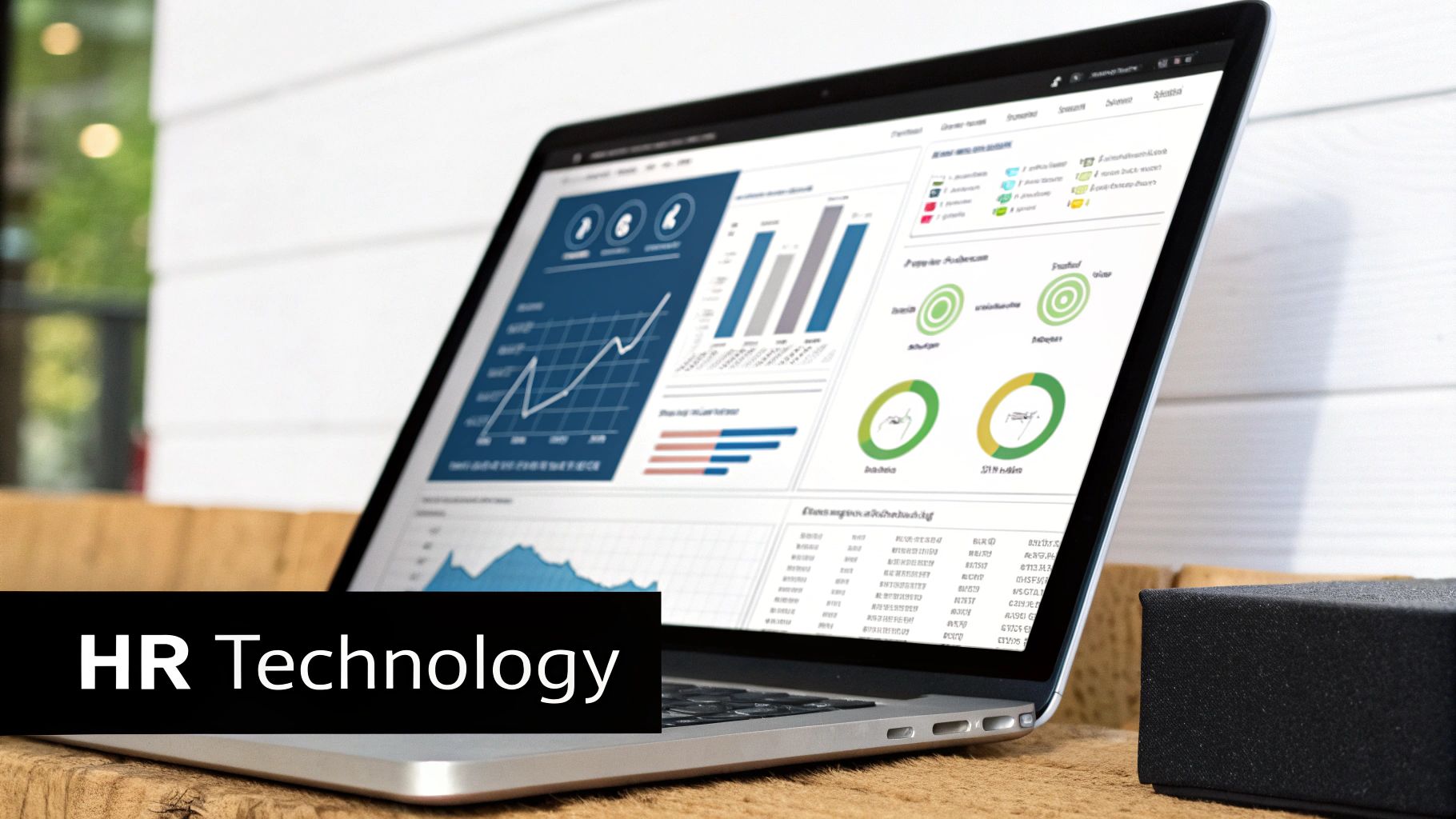
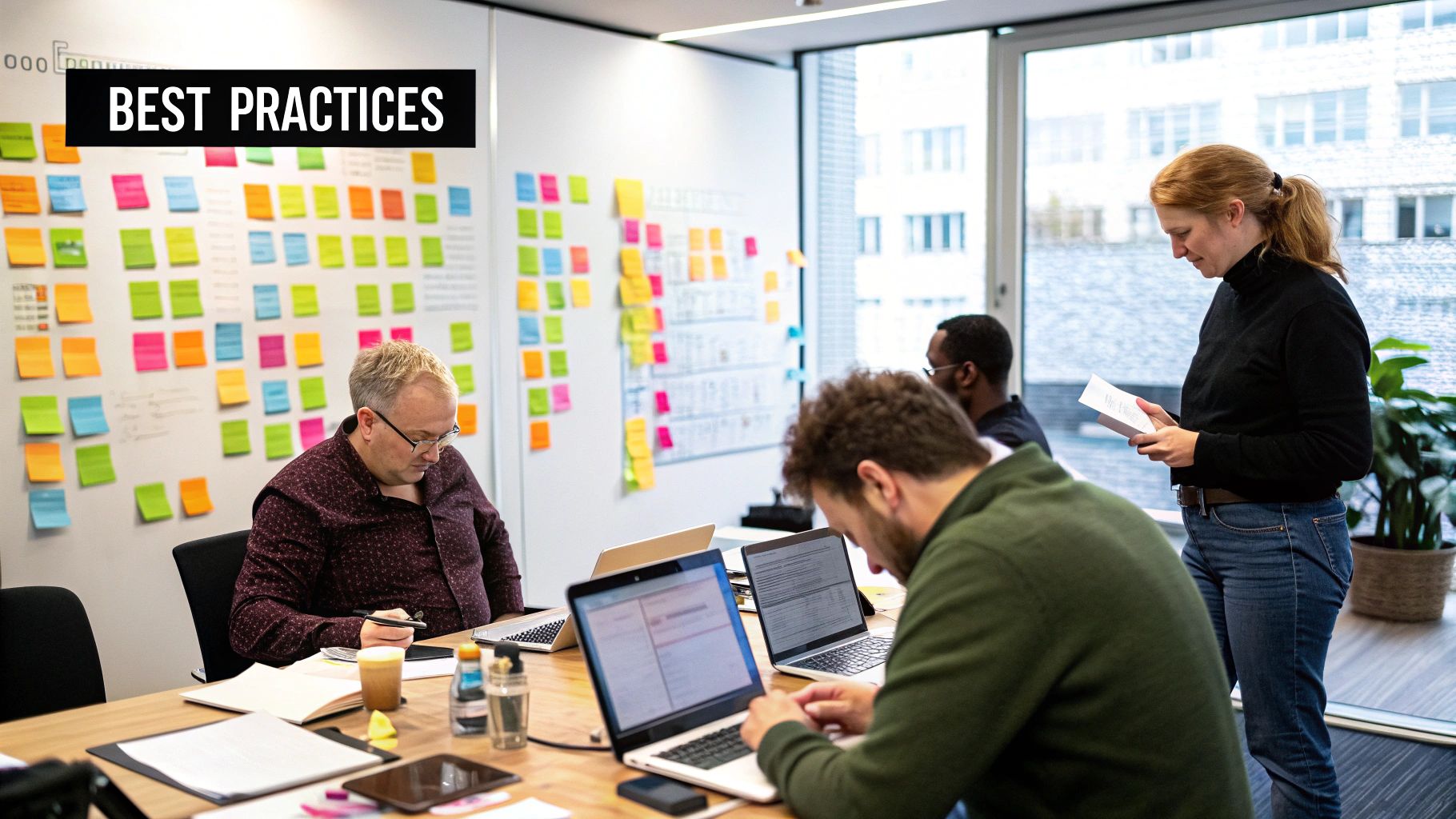

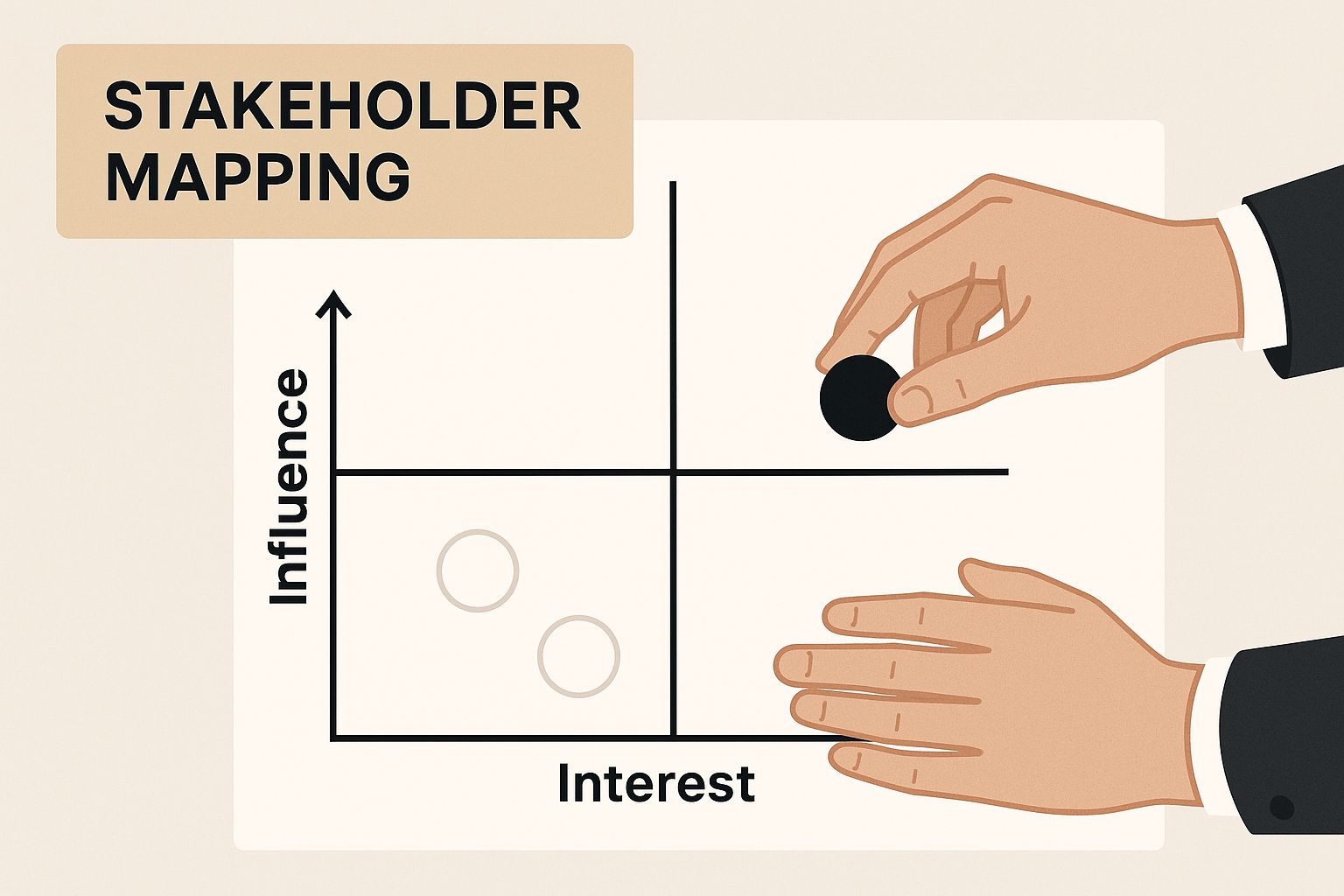

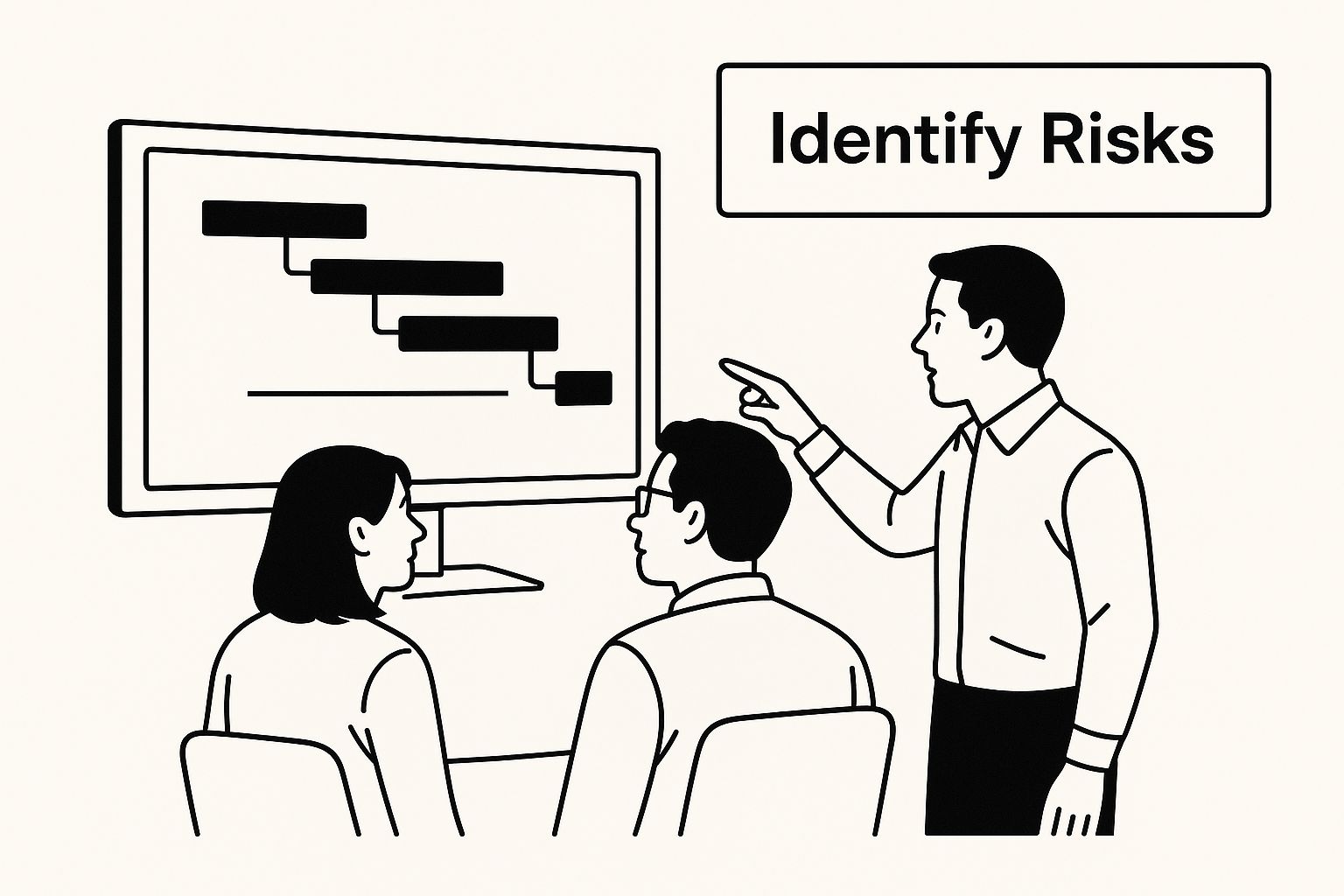



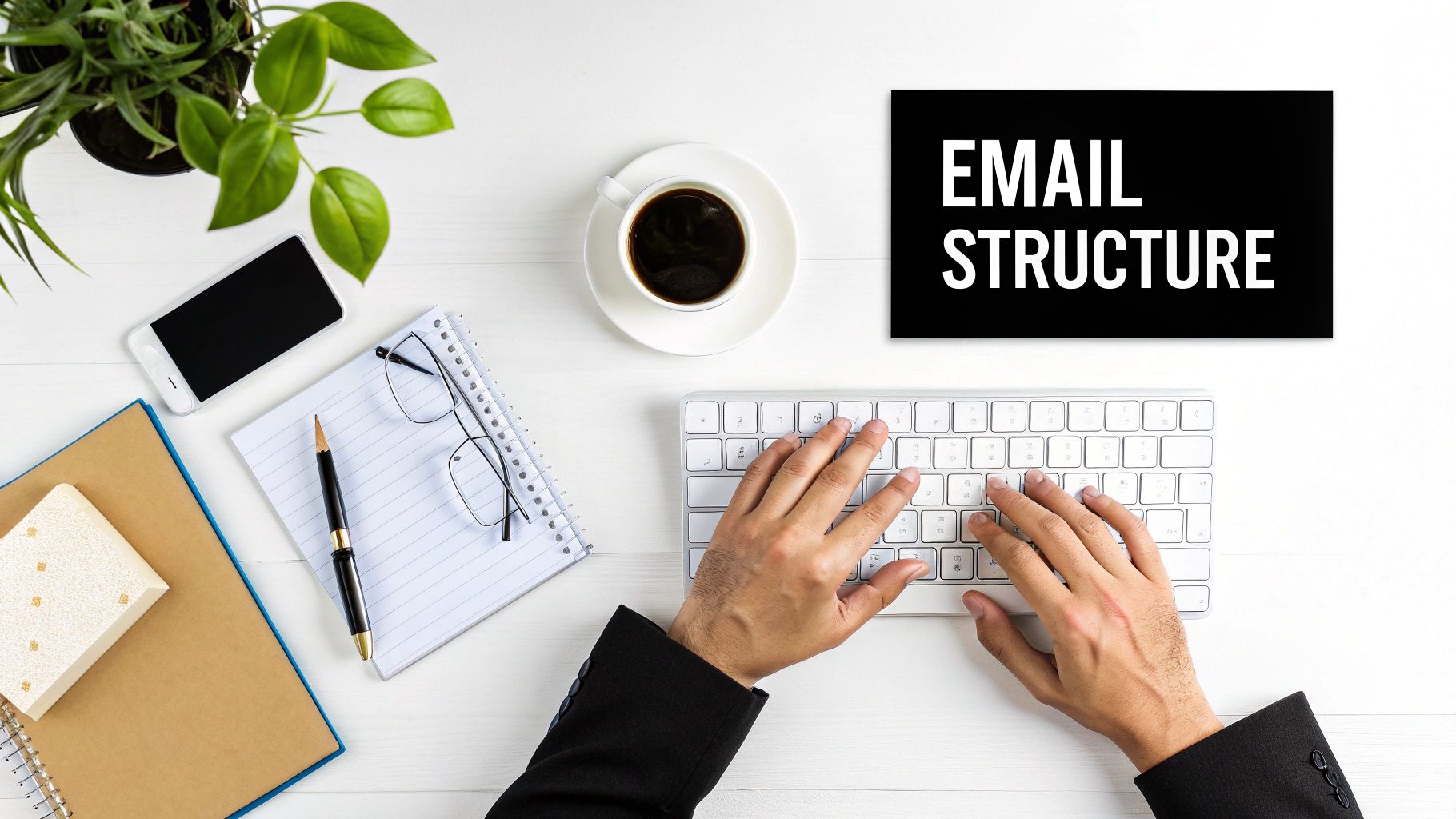






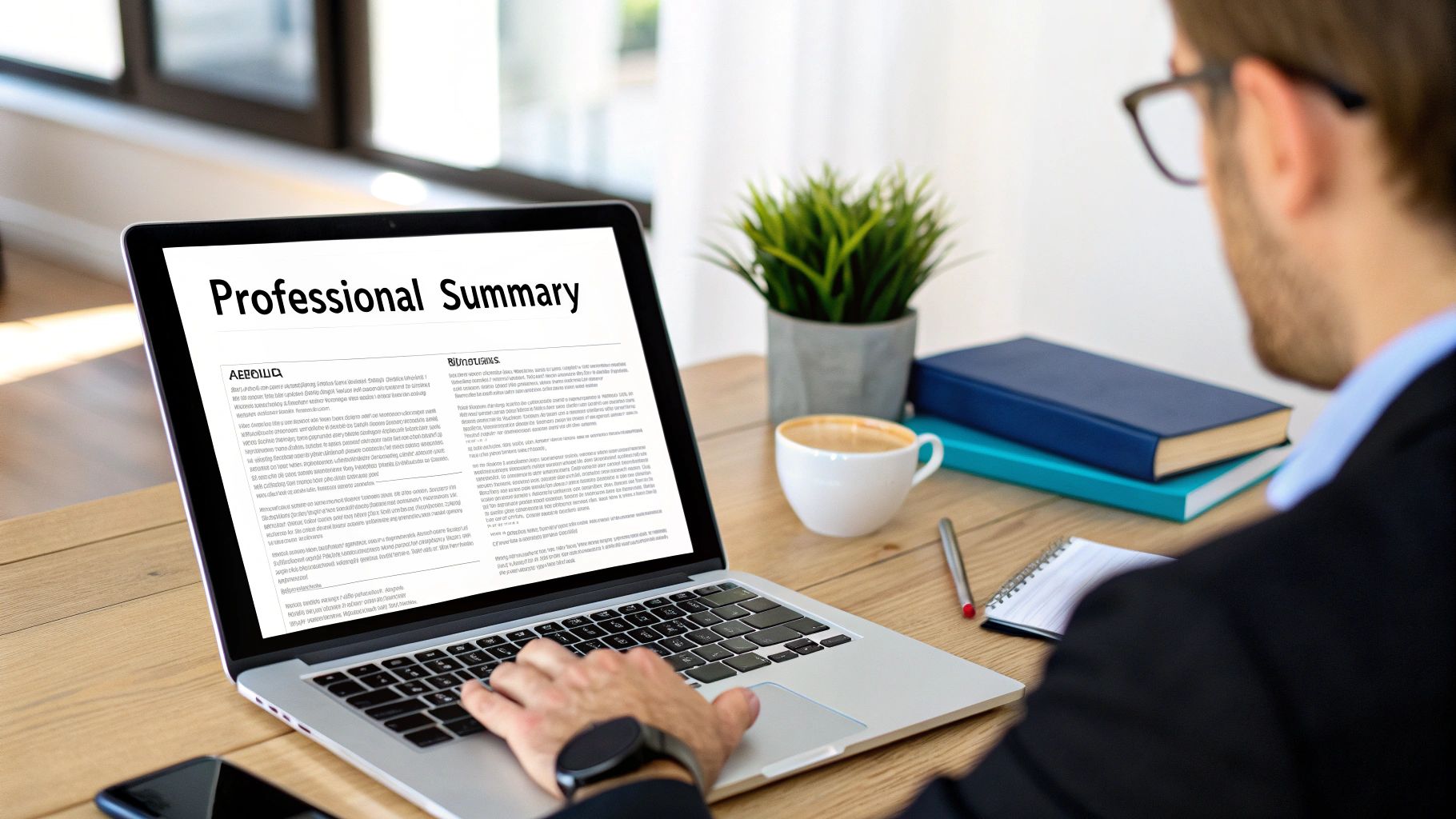










Recent Comments